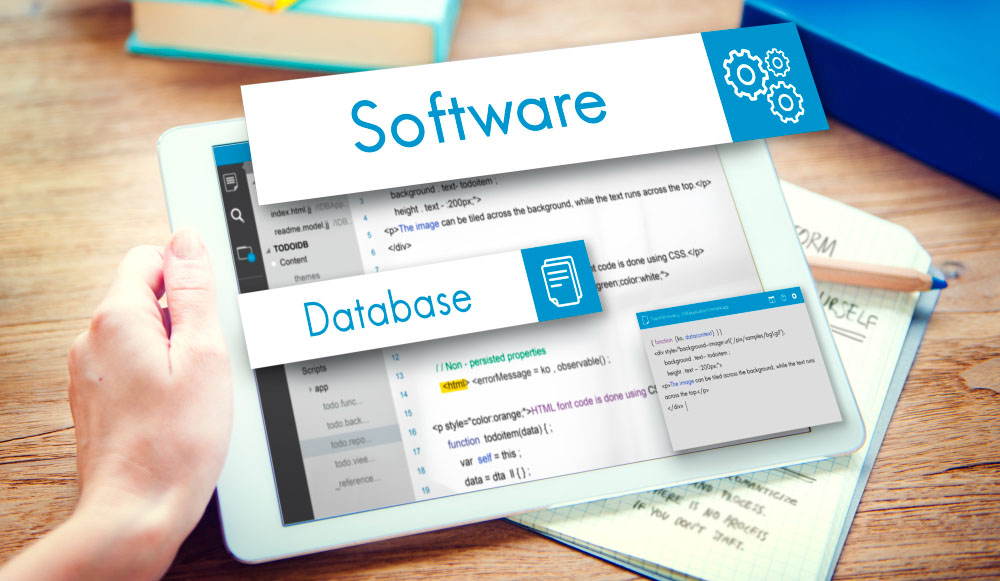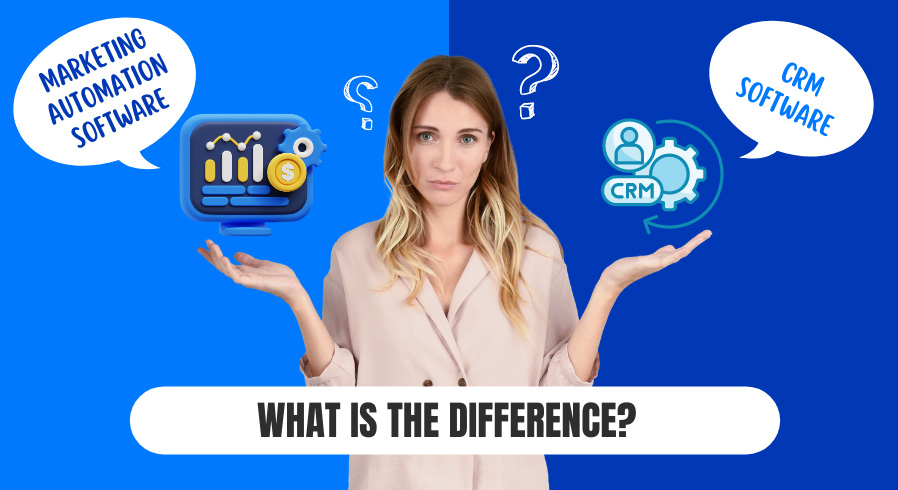Table of Contents

In today's fast-paced educational landscape, staying ahead means embracing technology that not only enhances organizational efficiency but also enriches student experiences. Customer Relationship Management (CRM) systems have been pivotal in transforming industries, and their impact is now being significantly felt within educational institutions. From managing student relationships to streamlining administrative processes, the role of CRM in education is both expansive and essential.
Education CRM software systems leave no stone unturned to take the productivity and performance of a business from the educational ecosystem to the next level. Nonetheless, not every CRM tool is equal in terms of features and performance. That means you should know how to choose the best option for your business from a diverse range of CRM tools.
Choosing the best CRM for an educational institution involves thoroughly understanding and evaluating its specific features. These systems offer centralized lead management, dynamic allocation, and robust communication tools that aid in maintaining comprehensive student profiles. Additionally, the right CRM can automate repetitive tasks, boost productivity, and provide real-time analytics to ensure seamless operations.
In this article, we will explore the key factors educational institutions need to consider when selecting a CRM. From ensuring seamless integration and scalability to empowering faculty and improving student experiences, we'll provide insights into choosing a system that not only meets present needs but also aligns with future growth and security requirements.
1. Understanding the Role of CRM in Education
Customer Relationship Management (CRM) systems have evolved to meet the needs of the education sector. They play a vital role in managing and analyzing student interactions from inquiry to graduation. By centralizing data and automating tasks, CRMs enhance engagement and efficiency throughout the student journey. With tools like contact management, email marketing, and data analytics, educational institutions can gain a 360-degree view of student interactions. This streamlined approach ensures better decision-making and optimized student outcomes. By monitoring student behavior and communication, CRMs provide better support and interventions.
Whether you're running a school, college, or university, a powerful CRM is essential for growth and delivering an exceptional student experience.
Importance of Student Relationship Management
In educational institutions, managing relationships with prospective and current students is crucial. CRMs help streamline these interactions, enhancing the student experience from enrollment through the entire lifecycle. By centralizing information, they make it easier to handle administrative tasks and engage students effectively. CRM systems offer transparency and productivity, helping institutions maintain contact before, during, and after enrollment. They support academic advising by building detailed student profiles, tracking their progress and extracurricular activities. Automation tools allow institutions to personalize support, making interactions with students meaningful.
Streamlining Administrative Processes
CRMs for educational institutions focus on organizing student databases, which helps streamline various administrative processes. With a centralized system, tasks like enrollment, communication, and data integration become more efficient. CRM systems automate application processing, document management, and interview scheduling, optimizing the admissions process. By moving past segmented data handling, institutions can improve operational efficiency and break down data silos. Through integrated communication, CRMs enable interactions with students, parents, and alumni from a single platform. The analytics tools available also allow institutions to assess marketing efforts, aiding data-driven decisions for resource allocation.
2. Evaluate CRM Features for Educational Needs
Choosing the right CRM for educational institutions takes careful thought. The best educational CRMs streamline administrative tasks, improving the student experience. They automate processes like communication and data entry, making life easier for staff and students alike. Key functions include centralized student data, efficient communication tools, and enhanced enrollment management. These systems help education institutions track student interactions, leading to better engagement and decision-making. Mobile capabilities further enhance efficiency, allowing tasks to be managed on the go.
Centralized Lead Management
Centralized lead management is vital for handling student inquiries from various sources. Educational institutions can get inquiries from websites, social media, phone call, whatsapp, and email. A reliable education CRM software organizes these into one dashboard. This ensures no lead is ignored. Real-time tracking gives admissions teams a clear view of each inquiry, enabling prompt responses. When all leads are managed from one place, coordination improves among staff. This enhancement helps provide no prospective student inquiry is overlooked, streamlining the entire admissions process.
Dynamic Lead Allocation
Dynamic lead allocation is another critical feature of educational CRMs. It ensures student inquiries are assigned rapidly based on criteria like location or course interest. This speeds up the process of converting inquiries into enrollments. Leads must be swiftly assigned to the right counselor which ensures efficiency and personalization. This streamlining helps potential students get timely and fitting responses.
Robust Communication Tools
Robust communication tools in a CRM are essential for improving interactions with students and faculty. Good CRMs personalize messages and offer two-way feedback through features like live chat or chatbots. Users can quickly gather feedback or address student queries using these tools. Such communication tools often include whatsapp messages, text messages, appointment booking options, making it easy to follow up on student queries. Without dedicated CRM solutions, using tools like Excel can hinder timely student interactions, proving the need for effective communication features.
Support for Comprehensive Student Profiles
Comprehensive student profiles are crucial for proper advising and support. A CRM can create these 360-degree profiles by compiling data such as academic history, courses, and extracurricular activities. With CRM systems, educational institutions can track student performance and intervene when needed. Features for appointment scheduling allow structured support and guidance for students. CRMs facilitate collaboration among advisors and educators, enhancing student support. Segmentation capabilities let institutions categorize students based on academic performance, career goals, and interests, tailoring the advising experience.
3. Assess Automation Capabilities
Choosing the right CRM for educational institutions can truly transform how they operate. Automation features in these systems play a crucial role. They streamline repetitive tasks, improve communication with students, and provide valuable data insights. By leveraging these capabilities, schools and universities can effectively enhance their efficiency and the student experience. Let's explore how automation capabilities can benefit educational institutions.

Reducing Repetitive Tasks
One significant advantage of using a CRM in educational institutions is the ability to automate repetitive tasks. These tasks often include sending welcome emails to new students and reminders about deadlines or events. By automating these processes, institutions free up valuable time for their staff. Automation also ensures that necessary communications occur without delay. This leads to more consistent engagement with prospective and current students. Routine tasks like follow-up emails and scheduling can be efficiently managed. This reduces the burden on administrative staff and enhances the operational efficiency of the education sector.
Enhancing Productivity
Adopting a CRM system in educational institutions can substantially boost productivity. This is mainly due to the automation of routine tasks such as email reminders and follow-ups. By minimizing manual work, staff members can concentrate on more important tasks that require their attention. Counselors, for instance, can efficiently capture notes, assign tasks, and plan for meetings with ease. This focus allows teams to improve overall throughput significantly. Additionally, the integration of CRM systems often results in a noticeable productivity surge. This is beneficial across diverse functions like admissions and managing the student experience. Streamlining workflows, consolidating data, and supporting proactive student engagement all contribute to this increased productivity.
Real-Time Analytics
Incorporating real-time analytics into a CRM system offers great advantages to educational institutions. With these features, staff can track student engagement, enrollment trends, and performance in real-time. This ability allows administrators to evaluate if their current communication strategies are effective or need adjusting. CRM systems with robust analytics also facilitate the monitoring of conversion rates and campaign success. Such insights enable education institutions to make informed, data-driven decisions. By tailoring communication efforts in response to real-time feedback, schools can better meet the needs of their students and other stakeholders. This results in a more dynamic and responsive approach to communication throughout the student lifecycle.
4. Ensure Seamless Integration
For educational institutions, choosing the right CRM involves checking its integration abilities. A CRM that seamlessly connects with other tools can extend its functionality beyond basic features. This means schools can manage tasks and communications, like email and social media, all within the CRM. An integrated system provides a 360-degree view, connecting insights across recruitment, admissions, and student experience. The key is to centralize data, thus improving visibility into critical processes. By automating these, educational CRMs improve efficiency and diminish administrative burdens.
Compatibility with Existing Systems
A CRM should align well with a school's current systems for recruitment, admissions, and alumni engagement. Integrated solutions help unify disparate data, eliminating the hassle of scattered information. With a unified system, institutions can swiftly adopt new operating models without needing to overhaul existing infrastructures. This adaptability eases collaboration across departments by enabling data sharing using API's and tracking. In essence, a compatible CRM amplifies an institution’s ability to connect insights, making it easier to serve prospective and current students.
User-Friendly Interface
A user-friendly CRM interface simplifies interaction for users. It offers communication options through email, phone, chat, social media, and web forms. This flexibility ensures everyone can engage using their preferred method. The CRM should allow easy filtering and sorting of student data to improve management efficiency. Quick actions, like sending bulk emails or updating records, boost productivity and save time. Integration and automation are crucial, reducing the manual workload. A well-designed CRM acts like a personal assistant, organizing tasks and sending reminders for informed decision-making.
5. Scalability and Adaptability
Choosing a Customer Relationship Management (CRM) system for educational institutions requires careful consideration of scalability and adaptability. A scalable CRM ensures efficient performance, even as student data grows and institutions expand their reach globally. This involves supporting multiple currencies and languages, thus catering to diverse educational environments. In terms of adaptability, the CRM should be customizable to manage varied student information and activities. The user interface must also allow personalization of list views, reports, and dashboards. By involving staff and stakeholders in its implementation, the CRM's adoption increases, fostering transparency and ownership. Additionally, the system should integrate seamlessly with existing software, maintaining simplicity while being flexible enough to meet evolving needs. This ensures the education sector can handle both current and prospective students effectively, improving the entire student lifecycle.
Growth-Oriented Solutions
Schools and colleges can greatly benefit from growth-oriented CRM solutions. These systems boost student engagement by managing interactions throughout the student lifecycle. The centralized platform they offer improves decision-making, giving administrators real-time access to essential data. A key advantage is automation, which streamlines repetitive administrative tasks, thereby allowing institutions to focus on strategic growth. Enrollment management is also enhanced as CRMs offer tools to track application statuses and document submissions. This makes the admission process smoother for prospective students. Furthermore, automating emails/messaging and notifications improves communication within the institution, keeping students, parents, and staff informed and engaged. This leads to a more satisfying experience for all parties involved.
Flexibility to Evolving Needs
A flexible CRM is a must for educational institutions to stay responsive to changing requirements. These systems should allow tracking of diverse, evolving activities specific to each organization. The ability to define and customize data fields ensures that the system remains relevant to the institution's needs. User interface customization is also crucial, as it lets users set up personalized list views, reports, and dashboards. For global institutions, features like multi-currency and multi-language support are essential. This not only eases operational efficiency but also enhances the student experience worldwide. By allowing the rearrangement of interface elements, an adaptable CRM meets the dynamic organizational tasks and strategies of educational institutions, boosting data-driven decision-making and improving relationships with students.
6. Empowering Faculty and Staff
The right CRM system can revolutionize how faculty and staff support students. With robust CRM tools, educational institutions can keep track of crucial metrics like student retention, enrollments, and engagement. This data is accessible across various channels, giving a comprehensive picture. CRMs simplify tasks by offering a unified view of interactions with students, alumni, and other stakeholders. By automating mundane administrative tasks, faculty and staff have more time to focus on meaningful student support.
Facilitating Collaboration
Collaboration is key to running a successful educational institution. CRMs can streamline communication between faculty, staff, students, and other stakeholders. These systems integrate tools for seamless interactions across email, phone, chat, social media, and web forms. Real-time collaboration features allow updates to the student database, making data access and actions smooth and efficient. With automation of tasks such as document processing, task assignments, and calendar management, collaboration between departments becomes fluid. A centralized hub for student information not only boosts teamwork but also improves the handling of enrollments and student support. In essence, a modern CRM supports institutional goals through enhanced communication strategies that personalize student experiences and improve resource allocation accuracy.
Enhancing Teaching Resources
When teaching resources are optimized, the impact on the student experience is profound. Educational CRMs serve as a vital support for administrative and academic teams. By enabling them to work efficiently on tasks like admissions and managing the student experience, CRMs enhance resource management. Automation capabilities reduce manual workloads by handling chores such as scheduling, report generation, and email responses. With a complete view of student data, institutions can swiftly identify at-risk students and offer timely interventions. Personalized learning paths are possible through insights drawn from robust CRM data. Integrated communication tools ensure alignment in communication strategies, helping institutions engage effectively with students, parents, and faculty. CRMs provide the foundations necessary for developing personalized educational experiences and fostering an environment conducive to student success.
7. Improving the Student Experience
Educational institutions aim to provide students with an enriching and seamless experience. One way to achieve this is by using a CRM system. An education CRM can automate tasks, reduce the workload on staff, and improve interaction with students. By keeping communication lines open through automated emails and notifications, both students and staff remain well-informed and engaged. This technology supports managing the entire student lifecycle with ease, assisting in student retention through improved communication and support. Furthermore, by centralizing essential student data, CRMs enhance guidance and allow access to vital student information. As a result, education CRMs contribute to a more efficient and satisfactory student journey.
Personalized Advising
Personalized advising plays a vital role in supporting student success. CRMs in educational institutions create detailed student profiles, combining data from academic histories to extracurricular activities. This helps advisors offer tailored advice. With this comprehensive view, education institutions can implement early warning systems to track student performance. Advisors can categorize students based on their academics, goals, and interests. This tailored advising strategy ensures students receive personalized guidance, improving their educational journey. Moreover, an integrated CRM platform unifies advising records, promoting collaboration among advisors and support staff. This streamlines workflows and ensures proactive advising, contributing to improved retention rates.
Effective Stakeholder Engagement
Effective stakeholder engagement is crucial when selecting a CRM for educational institutions. Involving staff and stakeholders in the decision-making process fosters transparency and trust. By creating a diverse selection committee, education institutions can gather feedback from all departmental representatives. This input is essential for making informed decisions. Conducting pilot programs and planning comprehensive training sessions are key steps that enhance stakeholder engagement. These initiatives ensure the successful implementation of CRM systems. When stakeholders are allowed to contribute, they feel a sense of ownership. This empowerment acknowledges their expertise and insights, leading to a successful CRM adoption. Engage stakeholders effectively, and educational institutions can enjoy the numerous benefits a CRM system offers.
8. Prioritize Data Security
In the education sector, data security is essential. A CRM system for educational institutions must not only protect information but also prevent unauthorized access. To do this, a CRM should offer user management capabilities such as creating, editing, and removing users. It should also allow for granting and revoking permissions. This helps in safeguarding sensitive student data and prevents data leakage, a significant concern for higher education institutions.
A CRM should also address concerns about data leakage by centralizing student information. This prevents fragmented data and maintains the integrity of information vital for the entire student lifecycle. Higher education CRMs should have compliance with standards like FERPA.
Compliance with Privacy Regulations
Choosing a CRM that complies with privacy regulations is critical for any educational institution. CRMs for higher education should support standards like FERPA, which is crucial in managing student data privacy. Compliance ensures that education institutions handle sensitive information responsibly and align with global data protection standards like SOC 2 and ISO. These protocols minimize risks associated with data leakage and ensure student communication remains secure. To comply with these privacy regulations, schools must also establish internal standards that a CRM should support. This involves setting clear processes to meet compliance effectively within the CRM system, essential for managing relationships with students and enhancing the student journey. Through this, educational institutions can maintain trust and efficiency in their digital engagements.
9. In-House or SaaS Software: Which option should you choose?
Are you ready to use an education CRM software system? You have two options to consider. First, you can develop an in-house CRM for your institution. Second, you can purchase a SaaS CRM from a reputable vendor. The choice depends on what suits your institution's needs best. Buying a licensed system is often the most practical option. This is especially true if your institution lacks the resources to develop an in-house system. Some believe in-house systems offer more features or customization, but this is a misconception. Modern CRM systems have transformed business operations with their features and personalization options. An advanced education CRM system can boost productivity and performance significantly. Building an internal CRM can be complex and time-consuming.
Therefore, most educational institutions find it beneficial to choose a sophisticated pre-built system. There are many education CRM options available. It is important to understand your specific business needs and expectations. Remember, there is no one-size-fits-all solution for CRM tools.

10. Conclusion and Future Considerations
Choosing the best CRM for an educational institution involves several important considerations. A flexible CRM platform is vital for ensuring growth and adapting to future needs. It connects insights campus-wide, instead of creating data silos. In the broader transformation of higher education, CRMs facilitate the adoption of new business models and hybrid courses. They open additional revenue streams to support long-term success. Automation within CRM platforms enhances communication and engagement. Sending emails, reminders, and notifications automatically helps universities stay connected with students and staff. By automating repetitive tasks, educational staff can focus on meaningful interactions and strategic initiatives. Reliable CRM systems serve as centralized hubs for managing student data. They provide crucial insights for data-driven decision-making, letting educators track conversion rates and monitor overall performance. These systems pave the way for making smarter decisions, ultimately leading to stronger student relationships.
Preparing for Ongoing Growth
Effective CRMs tailor-made for educational institutions play a key role in ongoing growth. They streamline administrative tasks by automating numerous processes, making operations more efficient. A comprehensive assessment of institutional needs is crucial when implementing a CRM. This audit should identify current bottlenecks and weak points. Understanding these areas helps tailor the system to fit the institution's specific needs. Furthermore, evaluating scalability is vital. The chosen platform must support the institution's future growth plans. This evaluation involves examining student enrollments, future student engagements, and prospective student inquiries to ensure seamless integration.
Overall, the right CRM system is a catalyst for growth, enabling institutions to craft stronger connections and foster a culture of continuous improvement.









